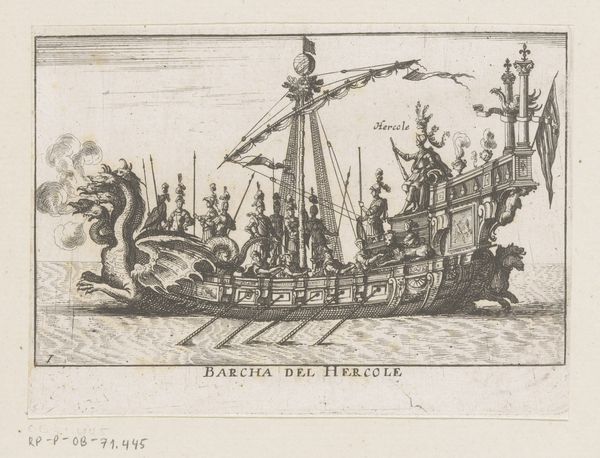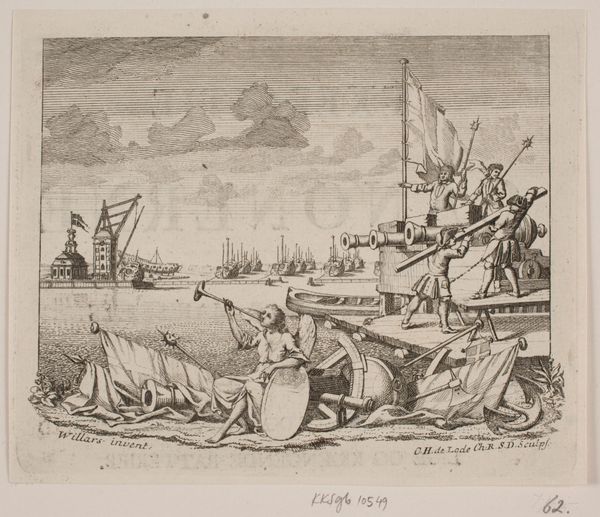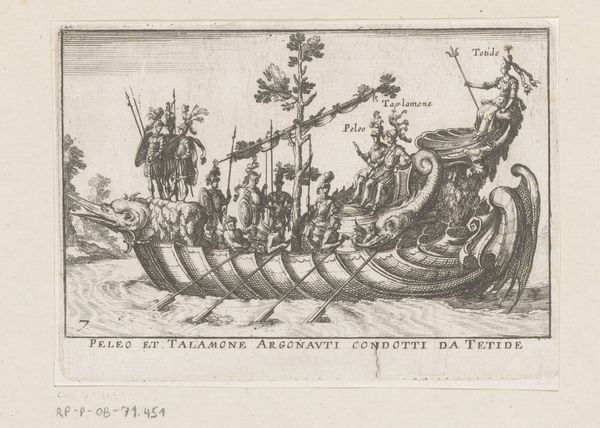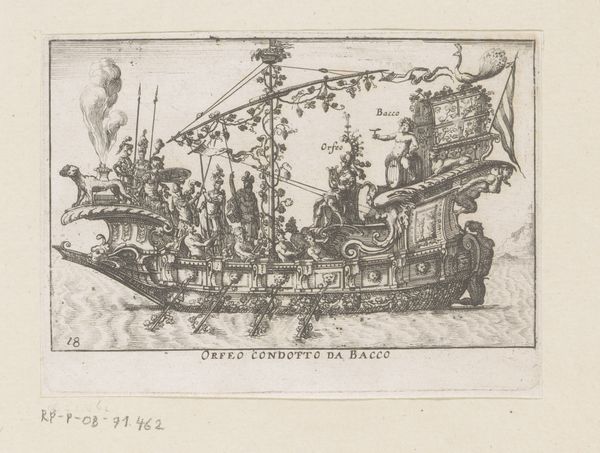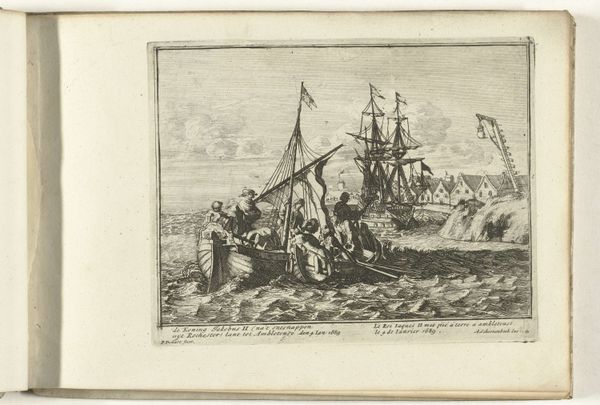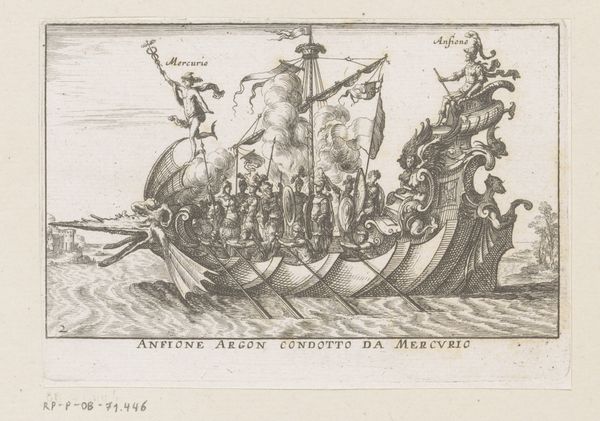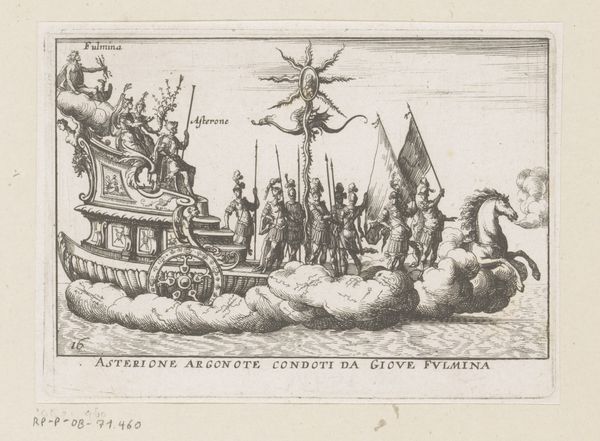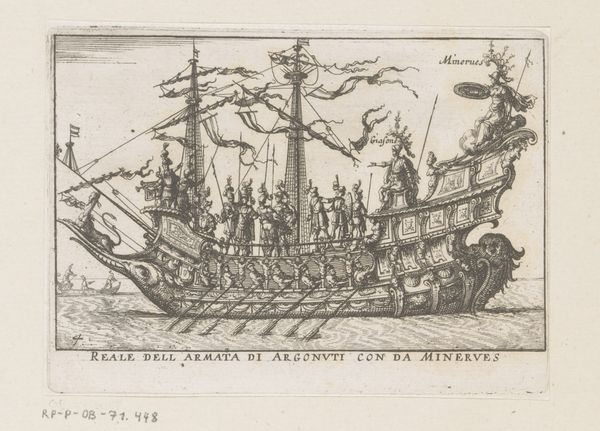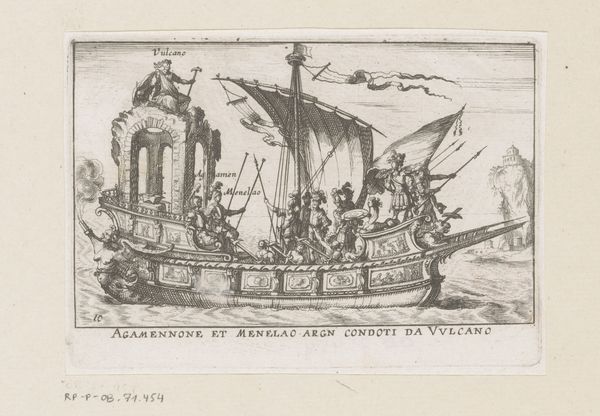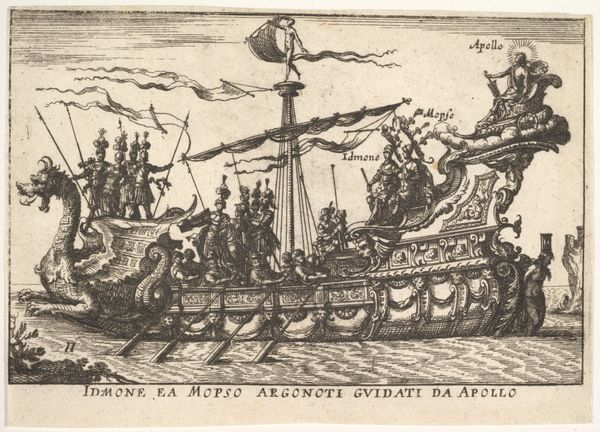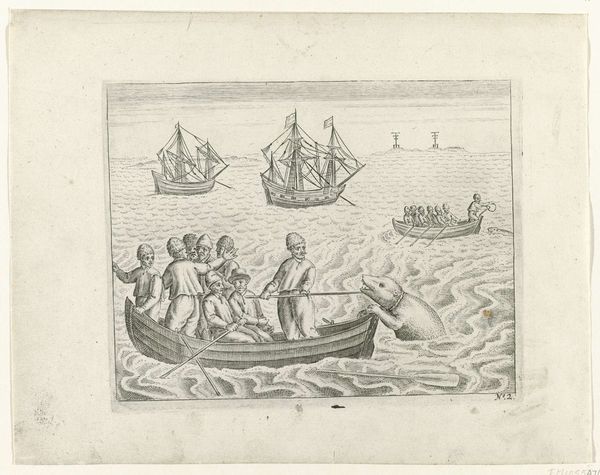
print, engraving
#
baroque
# print
#
figuration
#
geometric
#
line
#
history-painting
#
engraving
Dimensions: height 96 mm, width 133 mm
Copyright: Rijks Museum: Open Domain
Curator: Allow me to introduce you to a 17th-century engraving residing here at the Rijksmuseum, entitled "Ship with Diana on the Stern," dating circa 1635. Editor: Well, my first impression is certainly theatrical! The image feels both classical and incredibly ornate. How was this achieved as an engraving? Curator: Through a careful choreography of line. Notice how the engraver varies the density and direction of the lines to create depth, texture, and tonal variation across the ship’s structure. The interplay between light and shadow gives form to Diana's figure. Editor: Yes, I find myself fascinated by the laborious process of engraving. Can you imagine the sheer skill required to carve those delicate lines into a metal plate? Think of the workshops, the tools... it offers an interesting peek into craft practices of the Baroque period. Curator: Indeed. From a formal perspective, consider the strong diagonal created by the ship itself. This provides a dynamic energy which is further enhanced by the carefully balanced figures of Atalanta and Diana. Editor: Looking at the scale of this image, you almost feel transported back in time. Prints like this often functioned as a kind of mass media, distributing ideas and visual culture broadly and challenging art’s role as mere status symbol. Curator: Precisely. And we observe the recurring motif of the goddess Diana which would resonate deeply, speaking to ideals of heroism and divine order in the Dutch Golden Age. Editor: These visual connections reflect larger social concerns. Curator: Agreed. A deeper examination really accentuates the composition’s intricate details as we continue to decipher how its form mediates meaning. Editor: Analyzing the processes, materials, and broader usage scenarios certainly enriches our understanding. Curator: Ultimately, this work illustrates the engraver's ingenuity, and the beauty one finds from such a careful method. Editor: And by questioning artistic methods we begin to consider the impact on its original viewers. Thank you.
Comments
No comments
Be the first to comment and join the conversation on the ultimate creative platform.
